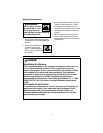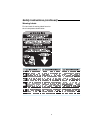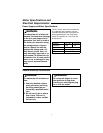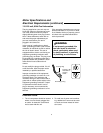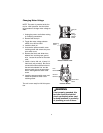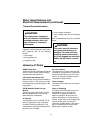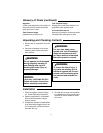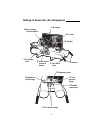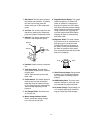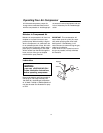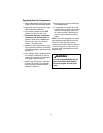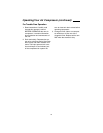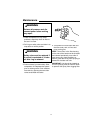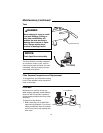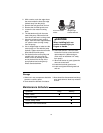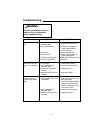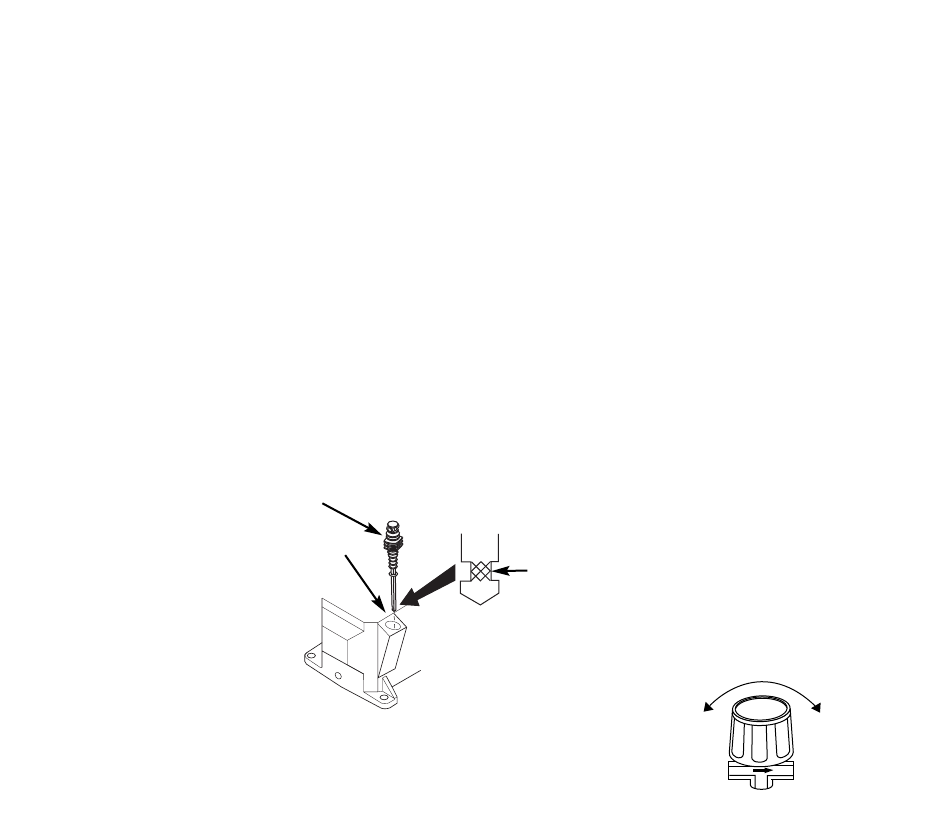
13
1. Belt Guard. The belt guard encloses
the pulleys and drive belt. It protects
the user from moving parts and
directs cooling air to the compressor
pump.
2. Air Filter. The air filter keeps dirt and
debris from entering the compressor
pump and reduces compressor noise.
3. Dipstick. The dipstick measures the
oil level in the compressor pump.
4. Handles. Used to move the compres-
sor.
5. Tank Drain Valve. The tank drain
valve allows moisture to be removed
from the tank.
NOTE: Each tank has its own tank
drain valve.
6. On/Off Switch. This switch allows for
manual control of the compressor.
Note that when the switch is turned
on, the compressor will automatically
start and stop depending on tank
pressure.
7. Air Storage Tanks. The tanks store
air for later use.
8. Motor Voltage Selector Switch.
Allows convenient voltage change
from 120 volts to 240 volts.
9. Regulated Outlet Gauge. This gauge
shows at-a-glance, air pressure at
outlet. Air pressure is measured in
pounds per square inch (PSI). Most
tools have maximum pressure ratings.
Never exceed the maximum pressure
rating of the tool you are using. Be
sure this gauge reads ZERO before
changing air tools or disconnecting
hose from outlet.
10.Regulator Knob. This knob controls
air pressure to an air operated tool or
paint spray gun. Turning the knob
clockwise increases air pressure at
the outlet. Turning counterclockwise
will lower air pressure at the outlet.
Fully counterclockwise will shut off the
flow of air completely.
11.Tank Pressure Gauge. Gauge shows
pressure in air storage tanks indicat-
ing compressor is building pressure
properly.
12.ASME Safety Valve. This valve auto-
matically releases air if the tank pres-
sure exceeds the preset maximum.
13.Air Outlet Fittings. These fittings are
1/4” universal-style quick connect fit-
tings and allow rapid tool changes.
Dipstick
Add Oil
Fill
Line
Max
Low
Close
Open



